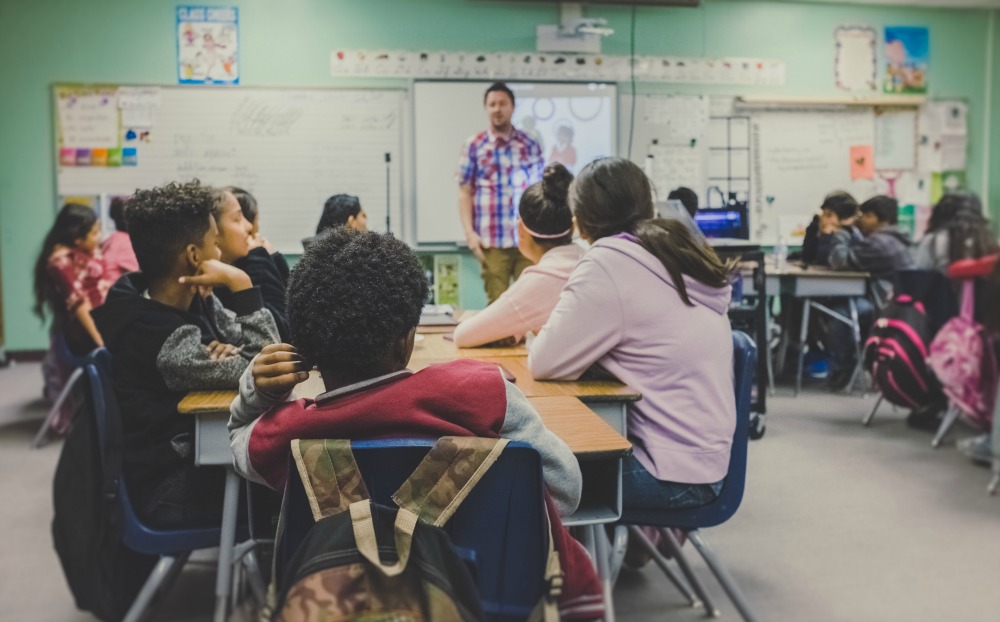Yet another incident of violence in a school. Over the last few weeks, there were shootings and stabbings in Kentucky, Texas, and New York high schools. We cannot deny or avoid the problem, even if we desperately try. Our children hear of these incidences, and even though they are relatively rare, we can only imagine the thoughts and feelings our children are sitting with. As parents we are fully aware of our deep concern, fear, and outrage over this epidemic.
From when our children are young, we teach them to avoid strangers. Sadly, it is the individuals they are familiar with that are the most likely to harm them. This includes their partners, family members, friends, and others they know. It’s frightening to accept that reality.
Children and adults are being injured, and in very unfortunate cases, murdered, just because they were in the wrong place at the wrong time. Research has shown that school shootings and other acts of violence are rarely impulsive acts. They are typically well thought out and planned in advance. For many offenders, they observed violent films, violent video games, and participated in repetitive viewing of violent media. The most common goal is for retribution. 61 percent are motivated by a desire for revenge, and 75 percent felt bullied, persecuted, or threatened by others.[i]
We also need to be aware of the “Werther Effect” which is defined as a duplication, copycat, of another suicidal act. Because these events are well-publicized, it can trigger an increase in similar acts for days or weeks after an incident.
What we can do.
Gun control is typically brought up and debated following an incident. The fundamental issue being neglected is that society and schools don’t necessarily teach constructive ways to cope and deal with depression, anxiety, disappointment, frustration, and other significant emotional states and emotions.
There isn’t guidance in teaching about emotional regulation, frustration tolerance, identifying core values, problem solving skills, etc. These constructs serve as the foundation to allow for regulating difficult emotions, fortifying a moral compass, and inevitably facilitating sound decision making.
Our Schools
Schools make it a point to conduct workshops on kindness, diversity, bullying, inclusivity, drug and alcohol use and abuse and many other topics, but don’t teach the foundational skills. The “do this” and “don’t do that” one shot deal workshop structure conducted at schools is unproductive and ineffective. It’s counterintuitive to how kids learn and integrate information and antithetical to research on learning theory.
Teaching about emotional states and emotions unequivocally matter. According to research, they are known to contribute to:
• attention, memory, and learning, • decision making, • the quality of relationships, • physical and mental health, and, • performance and creativity. There is a plethora of studies that support the need to integrate social emotional learning (SEL) in schools and at home because of the long-standing positive benefits.
Some evidence based school SEL and mindfulness curriculum that can be advocated for include:
“RULER” – Yale Child Study Center – (Pre-K-HS),
2. casel.org – (Preschool-HS),
3. “Second Step” – (k-8th grade)
4. “Mind Up” – Goldie Hawn Foundation – (Pre-K-8th grade) – www.mindup.org,
5. “School Connect” – (High School),
6. “Choose Love Movement” – (Pre-K-HS), and
7. mindfulllifeproject.org – (Elementary School-MS).
By integrating SEL’s 5 competencies — self-awareness, self-management, social awareness, responsible decision making, and relationship skills into curriculum content, educators are not only giving students opportunities to practice their social-emotional skills, but also showing them how integral these skills are in their daily lives.
As Parents
The more environments that are supporting our children in learning and strengthening their social and emotional intelligence (EI), the greater the benefit for all of us. It is important that we, as parents, advocate for a greater emphasis on SEL in the curriculum, but in the meantime, there are also measures we can take to strengthen the social and emotional intelligence of our children.
Role modeling for children by facilitating discussion around feelings, and making connections between children’s thoughts, feelings, and behaviors is essential. Facilitating an emotional climate is also critical. A parent can’t just infuse skills, they need to maintain a climate that is conducive for emotions to be expressed, accepted, and effectively worked through.
The way for parents to teach EI is to focus on:
• Recognizing emotion;
• Understanding emotion – i.e., knowing the causes and consequences of emotions;
• Expressing emotion – i.e., knowing how and when to express emotions with different people and in multiple contexts and under varied influences such as personality, gender, power, social norms (family/work), and race, ethnicity, and culture, and
• Regulating emotion – i.e., the thoughts and actions we use to prevent, reduce, initiate, maintain or enhance emotions.
Here are some diagrams and exercises helping to make the connection for children regarding understanding and identifying their emotions:
- Feelings chart to measure feelings on each day, or throughout the day.
- Feelings chart with 63 different facial expressions, to discuss or identify different feelings. Part of emotional intelligence is being able to identify and describe feelings and this will help help to expand their literacy around this.
- Another one to help with emotional literacy. An extensive list of words to describe physical and emotional states when your needs are satisfied, and when they aren’t.
- A feeling wheel.
- Develop coping cards:
- When I ________, I feel ______ (also rate intensity of feeling from 1 (low) to 5 (high) because ________.
- What I need is _________________________.
- See here for other activities and ideas on ways to explore emotions.
- For other ways parents can integrate SEL, see my blog on Huffington Post “Parenting With Emotional Intelligence: An Aspect Of Parenting That’s Too Often Overlooked“
As parents, we need to strongly consider taking a stand and advocate for fundamental change that would teach our children skills to regulate their emotions and would guide them in making more mindful decisions. Scarlett Lewis, Jesse Lewis’s mother who was a victim of Newtown, and created an SEL program called “Choose Love Movement” stated, “If this program had existed when Adam Lanza was a young child, it would have saved my son’s life and it would have saved Adam Lanza’s life.” About Adam she compassionately wrote, “He did what he was supposed to do, and it was up to us to help him. He was just a kid.”
Viewing curricula through a social, emotional, and moral lens is like a habit of mind: the more kids do it, the easier and more habitual it becomes. Perhaps the greatest benefit of teaching lessons like these is that kids will start to examine their education, their decisions, their interests, and their relationships through this lens. They will be assisted in cultivating a more thoughtful and discerning approach in their general life. What more can we want for our children and the peers our children interact with.
[i] CIRG/NCAVC. (1999). The School Shooter: A Threat Assessment Perspective.
About the Author: Michelle P. Maidenberg, Ph.D.
Michelle P. Maidenberg, Ph.D., MPH, LCSW-R. is the President/Clinical Director of Westchester Group Works, a Center for Group Therapy in Harrison, NY and maintains a private practice. She is the Co-Founder and Clinical Director of “Thru My Eyes” a nonprofit 501c3 organization that offers free clinically-guided videotaping to chronically medically ill individuals who want to leave video legacies for their children and loved ones.
She is Adjunct Faculty at New York University (NYU) in their graduate program in the Silver School of Social Work. Michelle is a Board of Directors member at The Boys & Girls in Mount Vernon. She is author of the book “Free Your Child From Overeating” 53 Mind-Body Strategies For Lifelong Health” and is also a Huffington Post blogger.
You can visit her website at: www.michellemaidenberg.com and link to her blogs at: http://www.michellemaidenberg.com/blog/. You can also visit her foundation at: www.thrumyeyes.org.


![It’s the simple things that are everything. We know play, conversation, micro-connections, predictability, and having a responsive reliable relationship with at least one loving adult, can make the most profound difference in buffering and absorbing the sharp edges of the world. Not all children will get this at home. Many are receiving it from childcare or school. It all matters - so much.
But simple isn’t always easy.
Even for children from safe, loving, homes with engaged, loving parent/s there is so much now that can swallow our kids whole if we let it - the unsafe corners of the internet; screen time that intrudes on play, connection, stillness, sleep, and joy; social media that force feeds unsafe ideas of ‘normal’, and algorithms that hijack the way they see the world.
They don’t need us to be perfect. They just need us to be enough. Enough to balance what they’re getting fed when they aren’t with us. Enough talking to them, playing with them, laughing with them, noticing them, enjoying them, loving and leading them. Not all the time. Just enough of the time.
But first, we might have to actively protect the time when screens, social media, and the internet are out of their reach. Sometimes we’ll need to do this even when they fight hard against it.
We don’t need them to agree with us. We just need to hear their anger or upset when we change what they’ve become used to. ‘I know you don’t want this and I know you’re angry at me for reducing your screen time. And it’s happening. You can be annoyed, and we’re still [putting phones and iPads in the basket from 5pm] (or whatever your new rules are).’♥️](https://www.heysigmund.com/wp-content/plugins/instagram-feed-pro/img/placeholder.png)
I read your well-written article on a break from teaching the “Restore 360” curriculum from Morningside Center For Teaching Social Responsibility. It is a fabulous Restorative Practices program that is implemented in many schools, including Lehman HS in the Bronx, where I am the Restorative Practices Coordinator. I appreciate the resources you included, some of which we we just speaking about in our 5-day training. I would add that more restorative work needs to be done in our schools and communities, which should include preventative relationship building and constructive ways to repair harms that may occur. These can help with breaking the “school to prison pipeline” and providing often missing or insufficient mental health services. Keep up the good work!